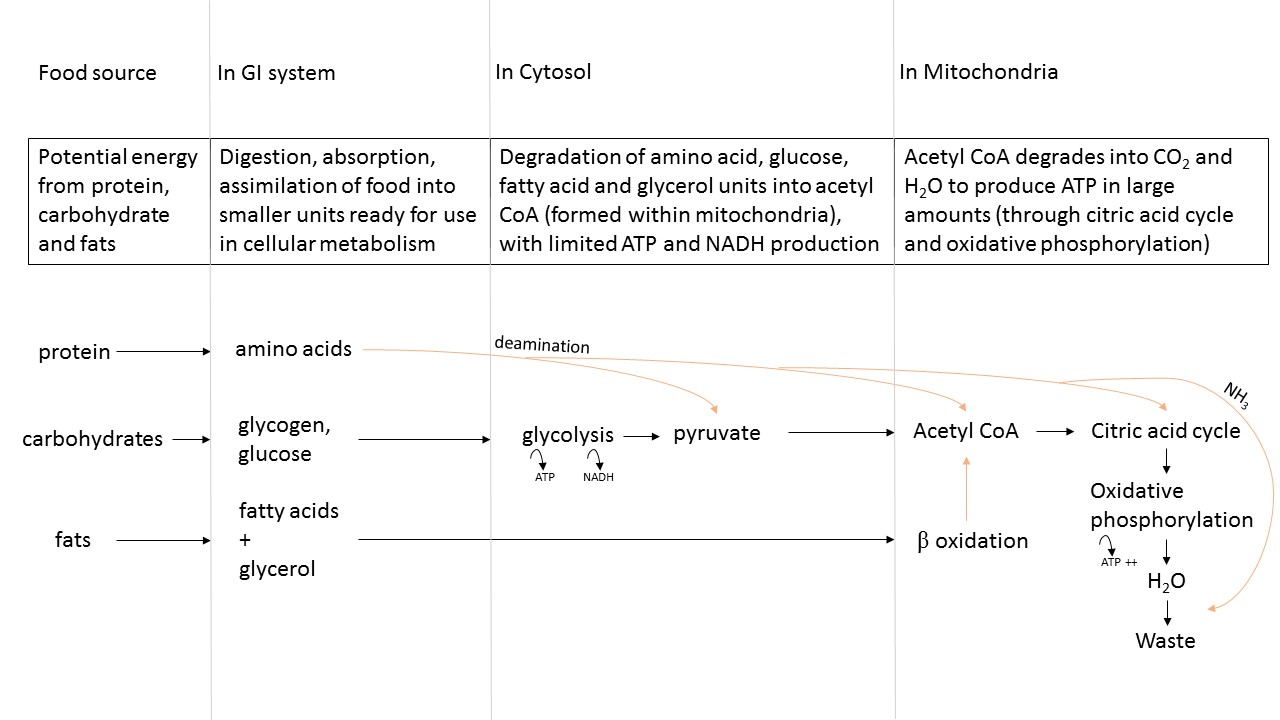ATP supply & Energy production:
Our body has a continuous ATP electron transport supply from the cells’ cytosol (Anaerobic – Glycolysis) and the mitochondria (Aerobic – Citric acid cycle/Respiratory chain), through various metabolic pathways.
In cytosol (an aqueous component of the cytoplasm of a cell), the anaerobic breakdown of phosphocreatine (PCr), glucose, glycerol, and carbon skeletons of deaminated amino acids take place to produce ATP for biological work.
In mitochondria, the aerobic breakdown of fatty acids, pyruvate from glucose, and some deaminated amino acids to produce ATP. The metabolic pathways involved to generate ATP aerobically are citric acid cycle, ß oxidation and respiratory chain.
Finally, the potential energy stored in ATP bonds are released for biologic work in two ways:
- ATP hydrolysis:
ATP + H2O <—ATPase—> ADP + Pi – ΔG 7.3 kCal/mol - Anaerobic ATP breakdown:
ATP <—ATPase—> ADP +Pi + Free energy[for Biologic work: Mechanical/Chemical/Transport]
PCr + ADP <—creatine kinase—> Cr + ATP
Energy production stages:

Electron Transport – Oxidative Phosphorylation – Respiratory Chain:

Supplementary sources of ATP:

Points to remember:
1. The complete oxidation of one glucose molecule in skeletal muscle by glycolysis, citric acid cycle and electron transport – oxidation phosphorylation yields 36 ATPs through energy transfer.
2. The complete breakdown of one glucose molecule releases 689 kCal of energy, out of which 38% (263 kCal) is conserved by ATP bonds and the remaining energy is released as heat.
3. Hydrogen oxidation is at a biochemical steady state/rate, during aerobic metabolism.
4. During anaerobic metabolism (intense exercise), hydrogen oxidation is not in pace with its production due to excessive energy demands. Hence, pyruvate binds with excess hydrogen temporarily to form lactate. This spares more time for intense exercise to continue for a while, allowing anaerobic glycolysis to continue until fatigue sets in.
Reference:
1. Merrill, A.L., Watt, B.K. “Energy value of foods: basis and derivation”. Washington, DC: United States Department of Agriculture. 1973.
2. McArdle, W.D., Katch, F.I. and Katch, V.L., 2010. Exercise physiology: nutrition, energy, and human performance. Lippincott Williams & Wilkins.